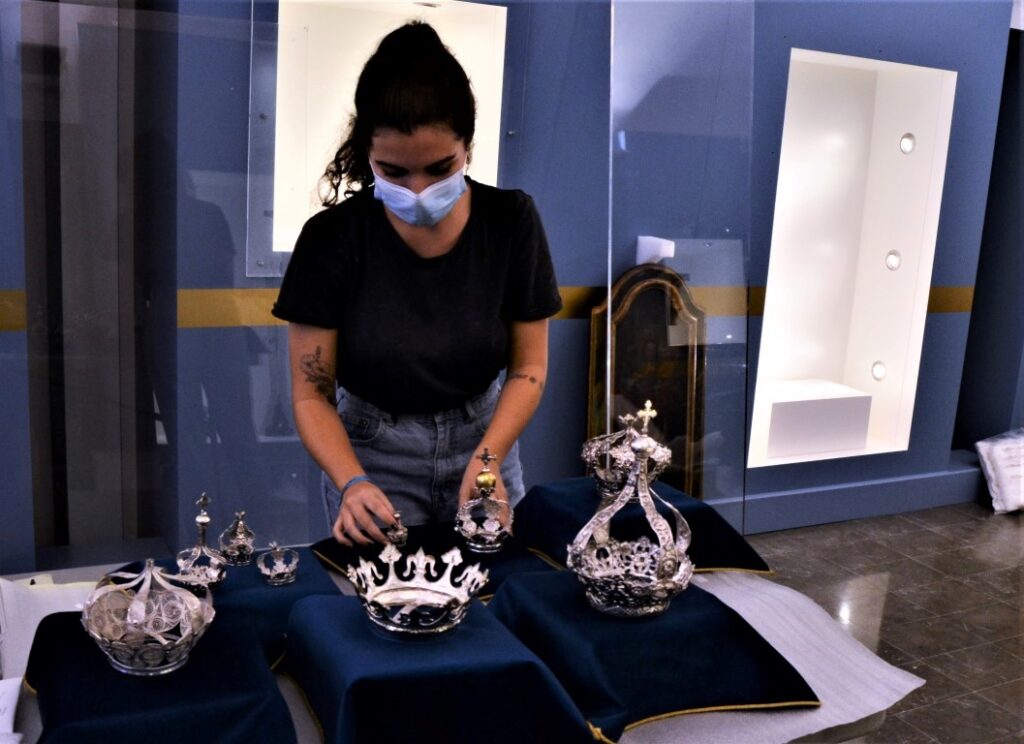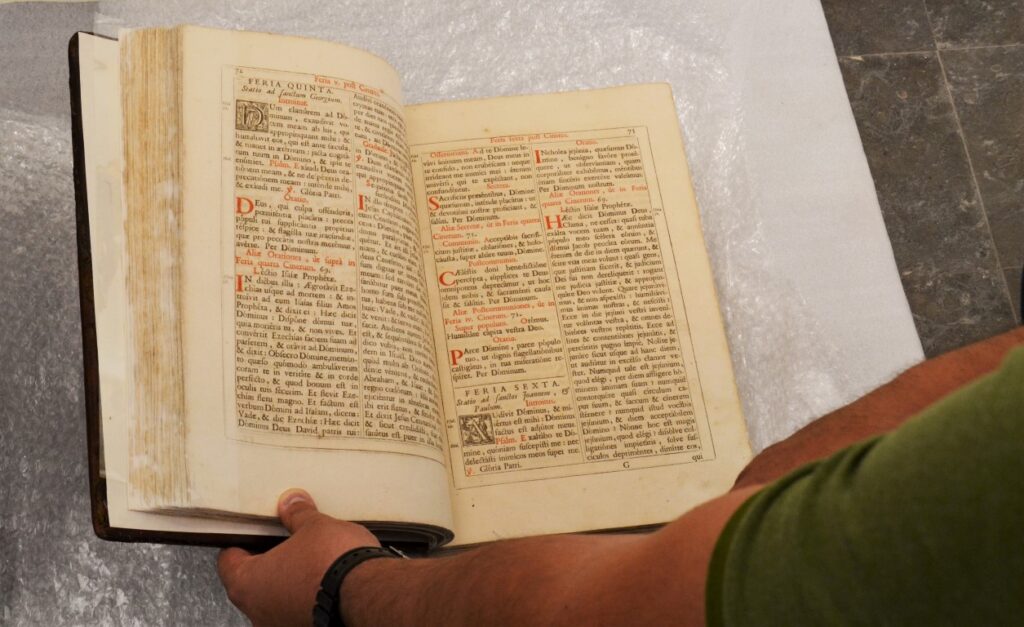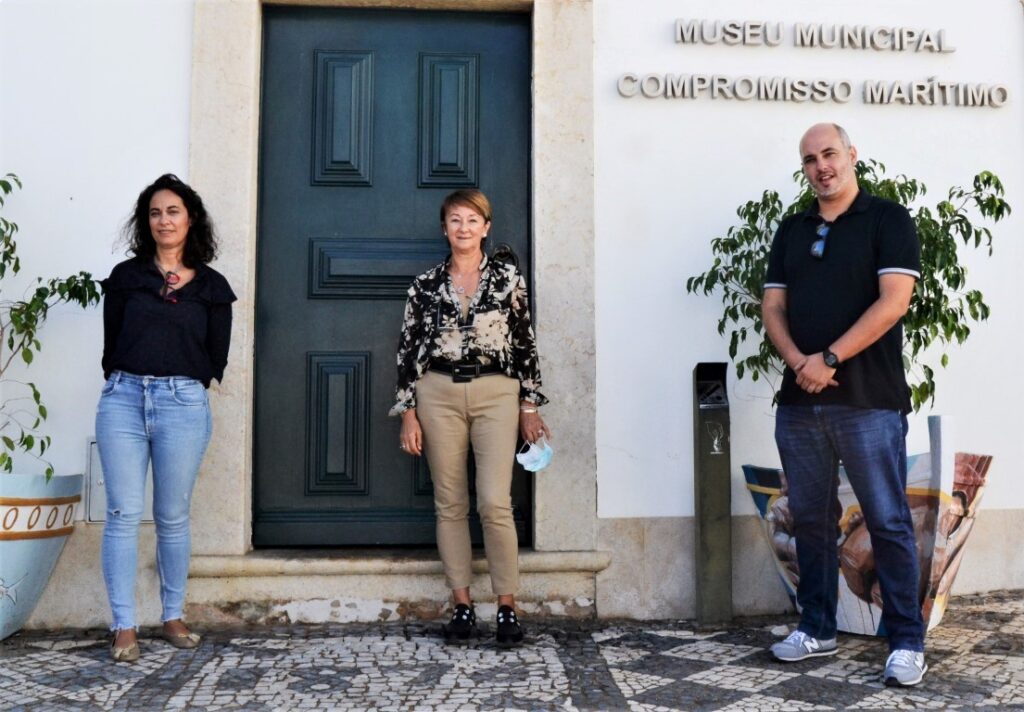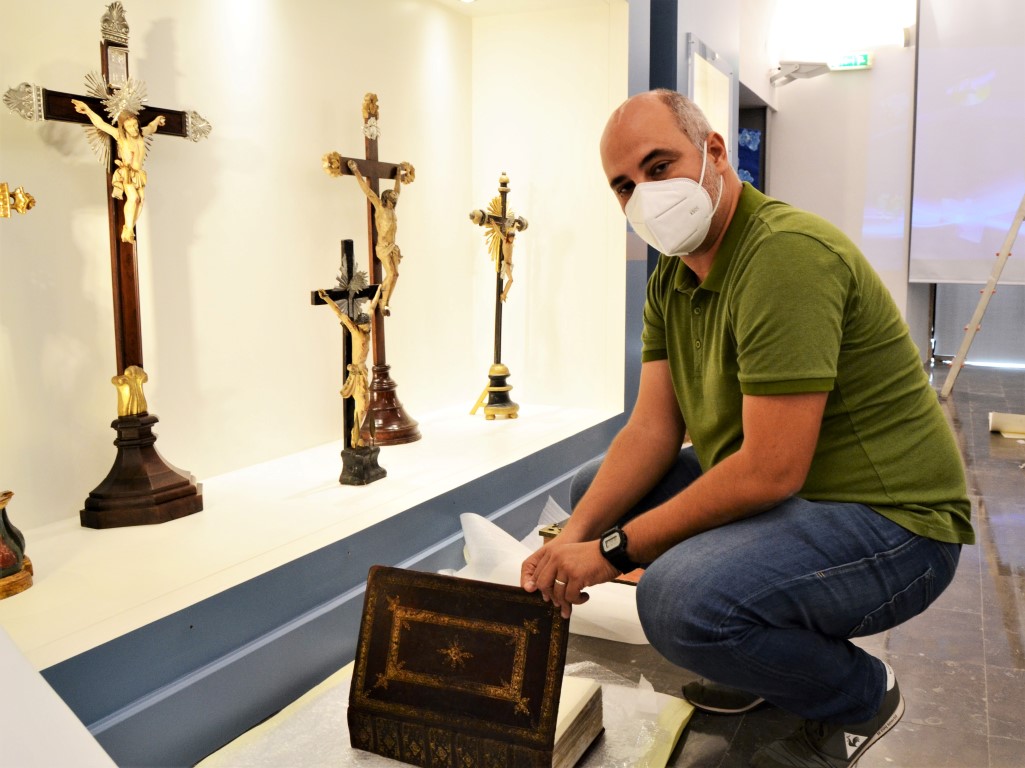It has been 325 years of devotion to Nossa Senhora do Rosário and the deepening of the connection between a community historically linked to fishing and its patron saint, which over three centuries ago led to the creation of a new parish, that of Olhão.
The Museum of Olhão, located in the former Compromisso Marítimo building, will host, starting on Sunday and for "at least a year", an exhibition commemorating the 325th anniversary of the creation of the parish and parish of Olhão.
“The exhibition is the result of the wish of the parish, namely Father Armando Amâncio, to commemorate 325 years. After a first meeting with Father Armando, the Municipal Archive and the museum were called in order to see what could be exhibited here,” he explained to Sul Informação Gracinda Rendeiro, councilor of the Chamber of Olhão.
And it quickly became clear that there was a lot of material to set up an exhibition.
Over more than three centuries, the people of Olhão have made decisive contributions to the recognition of the parish of Olhão, to the construction of the Mother Church, named after the patron saint and to the accumulation of a vast collection, resulting from the donations and contributions of the faithful, ranging from vestments and secular books to tableware in precious metals, without forgetting the “Treasure of the Saint”, which accompanies the image of Our Lady of the Rosary that goes out into the street in processions.
From Sunday onwards, some of the most emblematic and most interesting pieces of this collection can be seen at the Museum of Olhão.
«In the introductory room, we will have three pieces. Right away a set of boards that we discovered and that were almost hidden in the Church, to which people did not have access. We have restored them and it will be possible to visit them. We're also going to have an ex-voto, which was also somehow hidden. It is a vessel with fabulous details, which was someone's thanks to the saint. It's worth the visit», he described to our newspaper Hugo Oliveira, responsible for the Museum of Olhão.

The ex-libris of this first room will be, even so, the main figure of Nossa Senhora do Rosário, which will be exhibited there. The so-called Treasure of Santa, the pieces that accompany the image of the patroness of Olhão during the procession, will also be here, «for a limited time».
“The Treasury will only be here on specific dates, then it will return. It will be at the opening now and then probably around Christmas time. Later on, it will also be shown frequently. Usually, these pieces are only seen in the procession once a year. Here, people can see more calmly.», added the person in charge of the museum space.
The second room will be dedicated to sacred art. It can be seen paintings, vestments and liturgical implements, various images of the cross and goldsmithery.
The pieces that can be seen from Sunday onwards belong to the Parish of Olhão, but they reach the eyes of the general public after a whole work of inventorying and restoration, guaranteed by the Museum and Municipal Archive teams.
Many of the pieces were collected by Father Luís Gonzaga, but ended up being kept in a place without the necessary conditions, which meant that, in some cases, they were already very degraded when they arrived in the hands of the Museum's technicians.
«I want to emphasize that our team had a lot of work to recover the pieces that will be here. Some, namely the missal, were in a very advanced state of degradation. The work done by them deserves to be seen», said Gracinda Rendeiro.
«One of the great difficulties we had was at the tissue level. We had to recover almost thread by thread the vestments used in the homilies. We had to recover those missals, which were also in a very advanced state of degradation. And then, all the pieces in wood, in gilt, as well as the metals, at the level of silver and even gilt, had to be all recovered», described, for his part, Hugo Oliveira.

“This exhibition shows, on the one hand, the willingness of people to donate some objects to the church, by virtue of gifts, promises they have made, but also in terms of the services of the homily. These are pieces that have been collected over time. The oldest dates back to the beginning of the XNUMXth century. It's a very simple piece, made by someone, probably a fisherman, as a thank you. We are going to highlight this type of pieces», he added.
Hugo Oliveira reveals, moreover, that the fact that Olhão is a land of fishermen “is notorious in the pieces that will be exhibited”, with maritime motifs dominating the offers made by the faithful.
In addition to this work of recovering the pieces that will be on display, work was also carried out to collect and inventory the parish's documentary collection.
«The Municipal Archive was invited to participate, in a first phase, with the objective of taking stock and treating the parish archive, which was in a very satisfactory state of conservation, but kept and without knowing what existed there. In this way, we, the archival technicians, proceeded with the processing and digitization of the parish's documentary fund. A publication will be released in due course, an inventory, to make known to researchers», he explained to Sul Informação Helena Vinagre, responsible for the archives of the Chamber of Olhão.
Among the documents found, there is “a royal charter, in which the inhabitants of Olhão make a request to the king so that the fair in Olhão becomes a free fair. In this way, we learned that, at that time, in the second half of the XNUMXth century, there was already the Feira de Olhão, which was already called São Miguel».
“What is also curious is that the inhabitants of Olhão are asking for it to be done on the 28th, 29th and 30th of September. And even today it is on that date. This is a very interesting document, which we were totally unaware of. In fact, we've been looking for that answer for some time,” added the archivist.
«Then we have an interesting document, but much more recent, dating back to 1983, in which the bishopric grants the passage from the parish of Culatra to the jurisdiction here in Olhão – it belonged to Faro, of course. This is always a reason for satisfaction for the people of Olho,», concluded Helena Vinagre.

In light of the work that has been done, Gracinda Rendeiro does not spare praise for the museum and archive teams, in which the City Council “has been investing”.
"I just have to thank these two teams and those who have worked with me because they really are young people who are not from Olhão and who have been putting services on the map of Olhão and beyond," said the councilor of the City of Olhão.
And the investment in these two services is to continue.
«We are going to have new conservation and restoration installations, resulting from the executive's desire to provide the museum with a service, a value that we did not have. Before, we had to contract out. Therefore, there is also an investment by the executive here, in this sense, in improving the conditions of the service itself», illustrated Hugo Oliveira.
Help us to do the Sul Informação!
Contribute your donation so that we can continue to make your journal!
Click here to support us (Paypal)
Or use our IBAN PT50 0018 0003 38929600020 44



















Comments